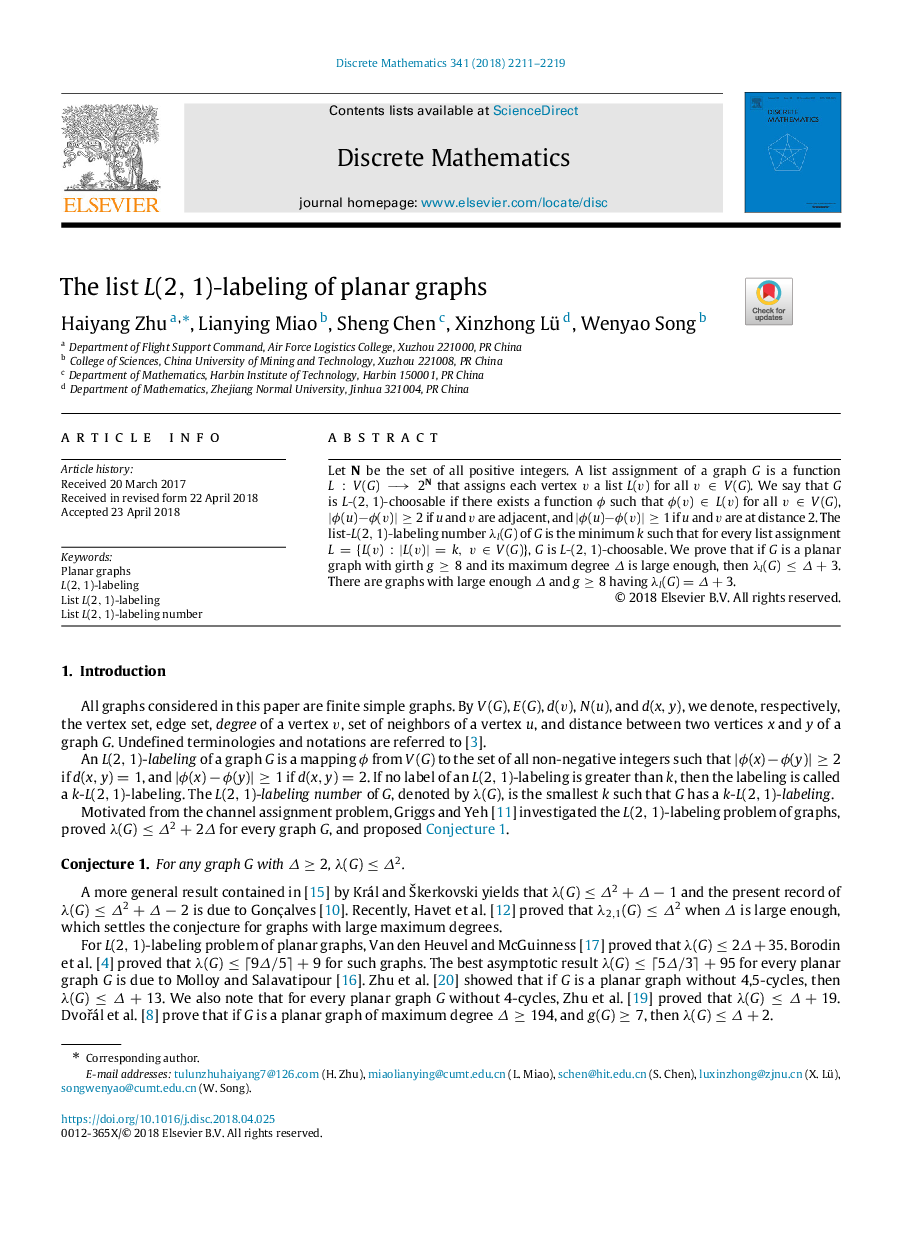| Article ID | Journal | Published Year | Pages | File Type |
|---|---|---|---|---|
| 8902917 | Discrete Mathematics | 2018 | 9 Pages |
Abstract
Let N be the set of all positive integers. A list assignment of a graph G is a function L:V(G)â¶2N that assigns each vertex v a list L(v) for all vâV(G). We say that G is L-(2,1)-choosable if there exists a function Ï such that Ï(v)âL(v) for all vâV(G), |Ï(u)âÏ(v)|â¥2 if u and v are adjacent, and |Ï(u)âÏ(v)|â¥1 if u and v are at distance 2. The list-L(2,1)-labeling number λl(G) of G is the minimum k such that for every list assignment L={L(v):|L(v)|=k,vâV(G)}, G is L-(2,1)-choosable. We prove that if G is a planar graph with girth gâ¥8
and its maximum degree Î is large enough, then λl(G)â¤Î+3. There are graphs with large enough Î and gâ¥8 having λl(G)=Î+3.
Keywords
Related Topics
Physical Sciences and Engineering
Mathematics
Discrete Mathematics and Combinatorics
Authors
Haiyang Zhu, Lianying Miao, Sheng Chen, Xinzhong Lü, Wenyao Song,
